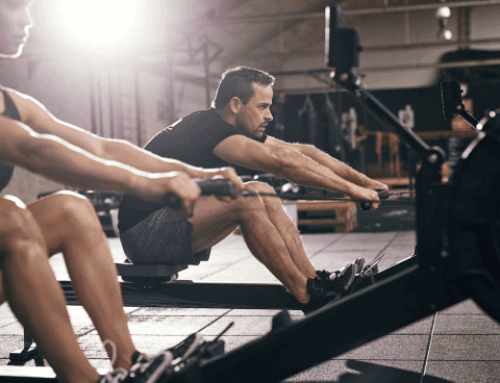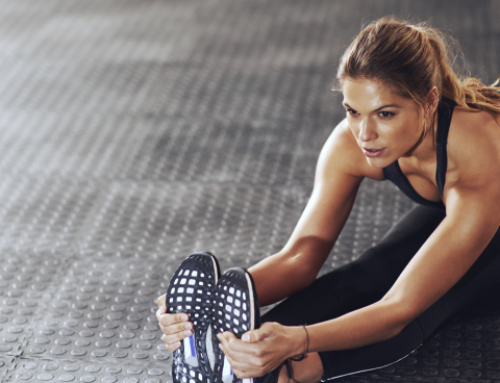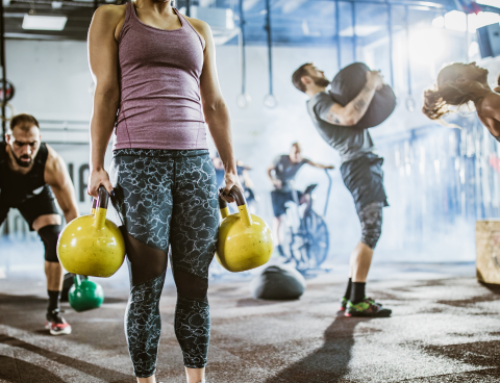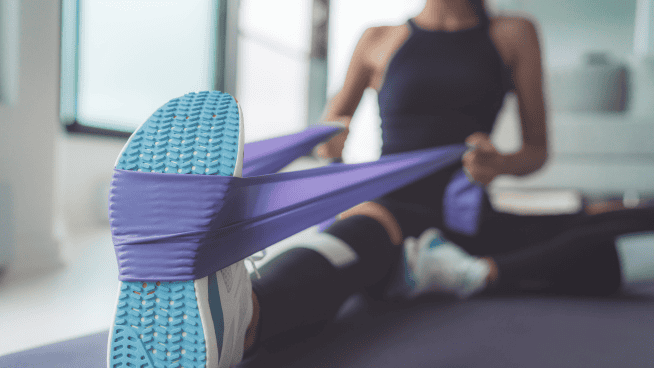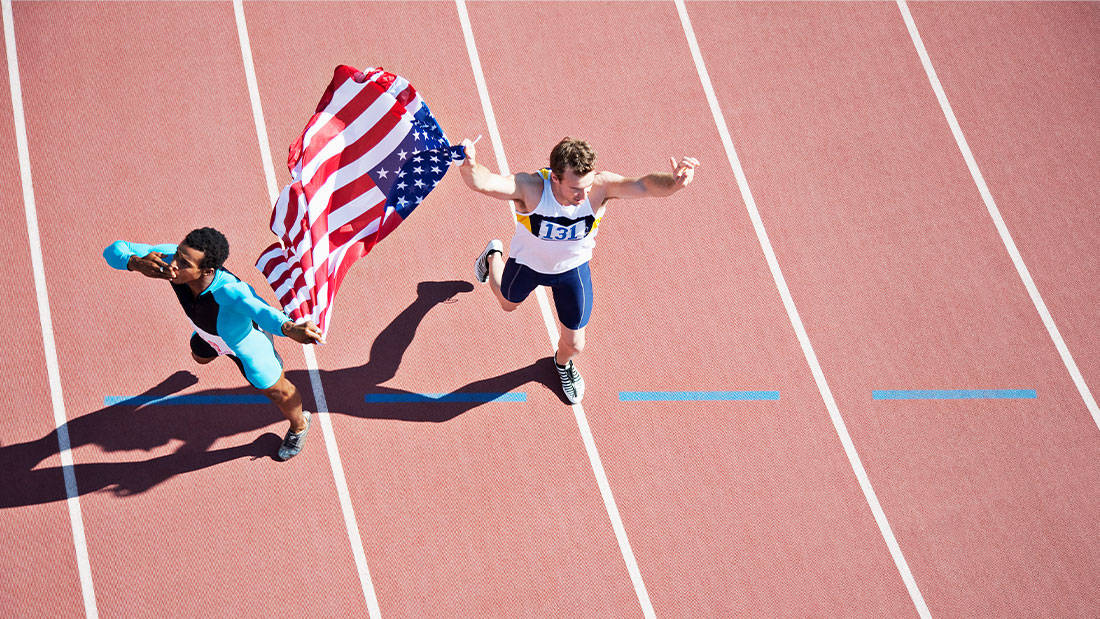3 Ways To Enhance Your Flexibility Instantly
Stretching and Flexibility
Most people think flexibility is just about stretching muscles. There really is more to it than that. Let me explain. When joints are stable and appropriately aligned, it optimizes flexibility. It is more effective because the joints are in the correct position for muscles to stretch and move properly. When joints are not, a compensated process occurs because of the joint’s incorrect position that causes functional imbalances in the muscles.
When the glut is weak and not stabilizing, the hip tilts forward, causing the quads to tighten and lose flexibility. This compensates flexibility and changes the muscles’ ability to stretch because the quads have to do the glutes’ job to stabilize. When you restore stability by strengthening the glute to stabilize the hip properly, the quads will restore their ability to stretch more effectively and maximally.
Therefore, the position of the joint and how you stretch and breathe maximizes flexibility. Understand and incorporate these three things to create instant flexibility and produce dramatic results in your range of motion!
Reciprocal Inhibition
Describes the neurologic process of muscles on one side of a joint relaxing to accommodate contraction on that joint’s other side. Reciprocal Inhibition is a feedback reflex. It works by first contracting the muscle that opposes the stretching muscle before you stretch in the movement—for example, your glutes and quads, quads and hamstrings. The contraction of the opposing muscle initiates a relaxation signal for the muscle to be stretched. Furthermore, the muscle contracting stabilizes the joint providing a more effective proper stretch of the muscle.
For example, when you lunge, contract the glute first to initiate the relaxation signal then stretch the quads.
Autogenic Inhibition
Autogenic Inhibition simply is holding the muscle’s tension barrier during a stretch for 7-10 seconds to relax the muscle further into a stretch. Your muscles know to the finest coordinate the length and speed in which they can stretch. By using autogenic Inhibition, you will be able to stretch further and further instantly, if you do it a few times during your stretch.
For example, when you stretch your muscle and the stretch stops due to tension, if you hold the tension for about 7-10 seconds, the muscles will relax and increase the stretch.
Breathing
Inhalation facilitates the contraction of muscles, and exhalation facilitates the relaxation of muscles. When you inhale, it stabilizes muscles, and when you exhale, it relaxes them. So, inhaling and exhaling using reciprocal Inhibition and autogenic Inhibition enhances muscular flexibility. The inhale supports the contraction, and the exhale helps the stretch. As you cycle your breathing through the stretching pattern, it increases more and more by adjusting, adapting, and changing the range.
For example, inhale as you stretch to the tension point in the stretch. Hold for 7 seconds, then exhale into the stretch further.
To stretch correctly, you want to incorporate all three things into your stretching routine.
Wait for the adjustments. Let the adjustments adapt. The adaptation will change and develop more range.
When you finish the stretch and motion, you will have an optimized pathway to move more freely through your range of motion. Flexibility is a process, not just stretching.
Isolated Stretching
Just stretching and stretching produces limited flexibility. Just stretching a muscle alone is not the best thing either. When you stretch muscles without initiating the proper signals, it pulls the muscle fibers apart. Stretching:
- Makes muscles lax,
- Desensitizes muscles’ ability to absorb and produce force and be explosive.
- Loses resiliency- the ability to restore their shape after being stretched.
- It creates inhibition of motor units firing to contract a muscle, meaning that they cannot contract as forcefully and fast, which is why it affects speed and power.
- Prolonged, increases the length of a muscle but decreases the tone.
As an athlete, muscles need to be able to stiffen, be springy, and explosive. Static stretching removes this ability. You want muscles to be resilient and springy, having the ability to stretch and recoil fast with power.
Static stretching doesn’t hurt you, but it decreases muscle force and contractility. However, it would be wise to understand why and when to stretch. Stretching with resistance is your best bet because even through you are stretching muscles, they still maintain resiliency, firmness, and stiffness with the ability to contract explosively, all at the same time. The added resistance makes the muscles absorb force at the same time, whereas static stretching does not.
Static stretching doesn’t have any detrimental effects, but when you go to load your body or use any kind of strength training or force production, this is where the problem starts to exist and underlie because your muscles don’t respond effectively.
Static stretching muscles reduce muscular stiffness in the lower body, decreasing runners’ running economy. (Running economy is the energy demand for a pace of running determined by measuring oxygen consumption.) The decrease in muscular stiffness due to stretching reduces the springiness and force production. When your muscles perform eccentric contractions and have stiffness and springiness, less oxygen and ATP are used. Less heat is produced because of using elastic energy. Static stretching does not enhance an athlete’s performance but diminishes it. The article also stated that flexible storage was more favorable for athletes with stiffer muscles and tendons.
The Best Times to Stretch
Believe it or not, the worst time to stretch is before competition and training. Stretching diminishes nerve potentiation and force production by making the muscle more relaxed due to increasing the muscle’s length. It relaxes the firmness of the muscle to be less springy and explosive. The trade-off is; muscles lose contractility and gain flexibility. Something you don’t want for your muscles, especially as an athlete, because contractility is your ability to be explosive.
- A few studies say that regular heavy stretching with resistance for 10 minutes three days a week increases strength, speed, and power and enhances flexibility and mobility.
- Others say that dynamic stretching through ranges of motion, where muscles contract and stretch, improve flexibility and promote muscular stiffness.
Static stretching does have a time, place, and purpose. If you want to static stretch, do it on non-training and non-competition days.
Avoid performing before training or competition because it will decrease the explosiveness in your movements.
Slow focused stretching with weights or resistance maintains and enhances muscular stiffness, springiness, and neural potentiation, as well as flexibility.
To understand more about the process of stretching, stiffness, springiness, and proprioceptors my book, The Balanced Body and Instant Strength explains them all more fully.
Read More
RECOMMENDED FOR YOU
MOST POPULAR
3 Ways To Enhance Your Flexibility Instantly
Stretching and Flexibility
Most people think flexibility is just about stretching muscles. There really is more to it than that. Let me explain. When joints are stable and appropriately aligned, it optimizes flexibility. It is more effective because the joints are in the correct position for muscles to stretch and move properly. When joints are not, a compensated process occurs because of the joint’s incorrect position that causes functional imbalances in the muscles.
When the glut is weak and not stabilizing, the hip tilts forward, causing the quads to tighten and lose flexibility. This compensates flexibility and changes the muscles’ ability to stretch because the quads have to do the glutes’ job to stabilize. When you restore stability by strengthening the glute to stabilize the hip properly, the quads will restore their ability to stretch more effectively and maximally.
Therefore, the position of the joint and how you stretch and breathe maximizes flexibility. Understand and incorporate these three things to create instant flexibility and produce dramatic results in your range of motion!
Reciprocal Inhibition
Describes the neurologic process of muscles on one side of a joint relaxing to accommodate contraction on that joint’s other side. Reciprocal Inhibition is a feedback reflex. It works by first contracting the muscle that opposes the stretching muscle before you stretch in the movement—for example, your glutes and quads, quads and hamstrings. The contraction of the opposing muscle initiates a relaxation signal for the muscle to be stretched. Furthermore, the muscle contracting stabilizes the joint providing a more effective proper stretch of the muscle.
For example, when you lunge, contract the glute first to initiate the relaxation signal then stretch the quads.
Autogenic Inhibition
Autogenic Inhibition simply is holding the muscle’s tension barrier during a stretch for 7-10 seconds to relax the muscle further into a stretch. Your muscles know to the finest coordinate the length and speed in which they can stretch. By using autogenic Inhibition, you will be able to stretch further and further instantly, if you do it a few times during your stretch.
For example, when you stretch your muscle and the stretch stops due to tension, if you hold the tension for about 7-10 seconds, the muscles will relax and increase the stretch.
Breathing
Inhalation facilitates the contraction of muscles, and exhalation facilitates the relaxation of muscles. When you inhale, it stabilizes muscles, and when you exhale, it relaxes them. So, inhaling and exhaling using reciprocal Inhibition and autogenic Inhibition enhances muscular flexibility. The inhale supports the contraction, and the exhale helps the stretch. As you cycle your breathing through the stretching pattern, it increases more and more by adjusting, adapting, and changing the range.
For example, inhale as you stretch to the tension point in the stretch. Hold for 7 seconds, then exhale into the stretch further.
To stretch correctly, you want to incorporate all three things into your stretching routine.
Wait for the adjustments. Let the adjustments adapt. The adaptation will change and develop more range.
When you finish the stretch and motion, you will have an optimized pathway to move more freely through your range of motion. Flexibility is a process, not just stretching.
Isolated Stretching
Just stretching and stretching produces limited flexibility. Just stretching a muscle alone is not the best thing either. When you stretch muscles without initiating the proper signals, it pulls the muscle fibers apart. Stretching:
- Makes muscles lax,
- Desensitizes muscles’ ability to absorb and produce force and be explosive.
- Loses resiliency- the ability to restore their shape after being stretched.
- It creates inhibition of motor units firing to contract a muscle, meaning that they cannot contract as forcefully and fast, which is why it affects speed and power.
- Prolonged, increases the length of a muscle but decreases the tone.
As an athlete, muscles need to be able to stiffen, be springy, and explosive. Static stretching removes this ability. You want muscles to be resilient and springy, having the ability to stretch and recoil fast with power.
Static stretching doesn’t hurt you, but it decreases muscle force and contractility. However, it would be wise to understand why and when to stretch. Stretching with resistance is your best bet because even through you are stretching muscles, they still maintain resiliency, firmness, and stiffness with the ability to contract explosively, all at the same time. The added resistance makes the muscles absorb force at the same time, whereas static stretching does not.
Static stretching doesn’t have any detrimental effects, but when you go to load your body or use any kind of strength training or force production, this is where the problem starts to exist and underlie because your muscles don’t respond effectively.
Static stretching muscles reduce muscular stiffness in the lower body, decreasing runners’ running economy. (Running economy is the energy demand for a pace of running determined by measuring oxygen consumption.) The decrease in muscular stiffness due to stretching reduces the springiness and force production. When your muscles perform eccentric contractions and have stiffness and springiness, less oxygen and ATP are used. Less heat is produced because of using elastic energy. Static stretching does not enhance an athlete’s performance but diminishes it. The article also stated that flexible storage was more favorable for athletes with stiffer muscles and tendons.
The Best Times to Stretch
Believe it or not, the worst time to stretch is before competition and training. Stretching diminishes nerve potentiation and force production by making the muscle more relaxed due to increasing the muscle’s length. It relaxes the firmness of the muscle to be less springy and explosive. The trade-off is; muscles lose contractility and gain flexibility. Something you don’t want for your muscles, especially as an athlete, because contractility is your ability to be explosive.
- A few studies say that regular heavy stretching with resistance for 10 minutes three days a week increases strength, speed, and power and enhances flexibility and mobility.
- Others say that dynamic stretching through ranges of motion, where muscles contract and stretch, improve flexibility and promote muscular stiffness.
Static stretching does have a time, place, and purpose. If you want to static stretch, do it on non-training and non-competition days.
Avoid performing before training or competition because it will decrease the explosiveness in your movements.
Slow focused stretching with weights or resistance maintains and enhances muscular stiffness, springiness, and neural potentiation, as well as flexibility.
To understand more about the process of stretching, stiffness, springiness, and proprioceptors my book, The Balanced Body and Instant Strength explains them all more fully.
Read More

